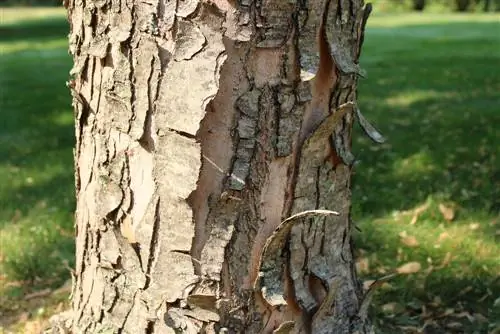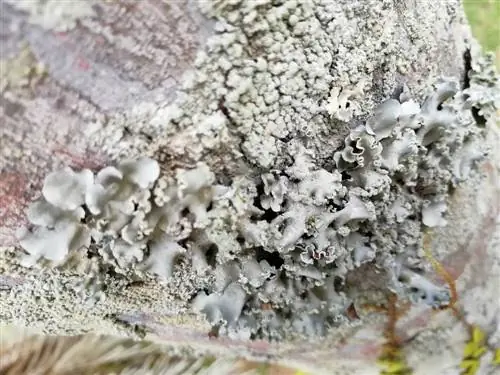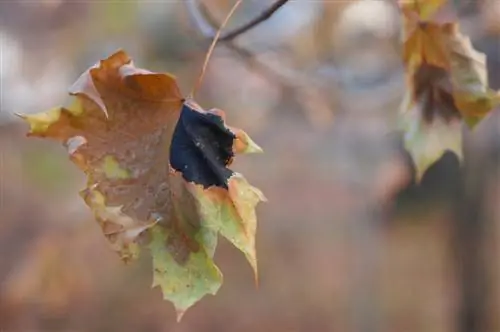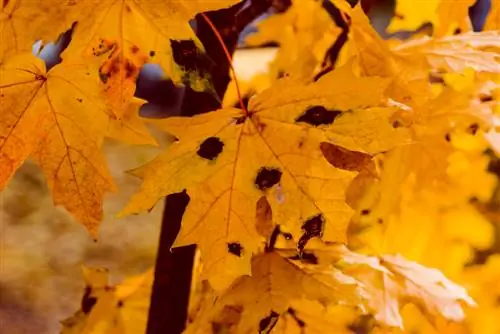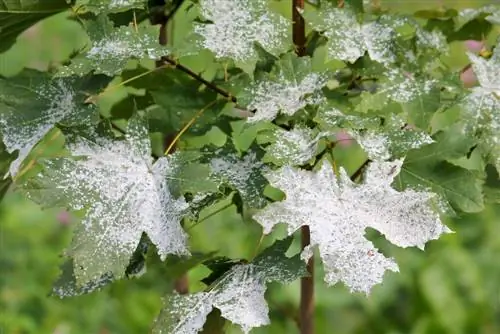- Author admin [email protected].
- Public 2023-12-16 16:46.
- Last modified 2025-06-01 06:02.
Water periods and phases of drought promote trunk diseases that affect many trees. Damage to the globe maple is also becoming more and more common, which in the worst case can lead to the tree dying. We explain how you can identify and treat them.
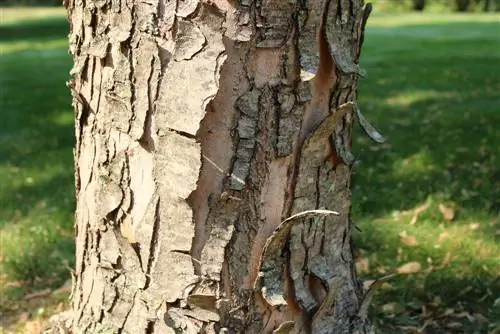
Which diseases affect the trunk of the globe maple?
Spherical maple trunk diseases can be frost cracks, verticillium wilt, tree canker or sooty bark disease. Prevention and treatment vary depending on the disease, with some cases not allowing successful treatment and requiring the tree to be removed.
What do frost cracks look like on the trunk of the maple maple?
Vertical furrows on one side of the trunk can befrost cracks, which are caused by intense sunlight in cold weather. As a result, the temperature on the south side of the tree trunk is significantly higher, tension occurs and the bark cracks.
Prevention
- Wrap the trunk with jute or fleece.
- A white coat of lime prevents the bark from warming up too quickly after a very cold night.
Treatment
So that no fungi or pests can settle, you should seal frost cracks promptly with a wound closure preparation (€17.00 at Amazon).
Why is the bark of the globe maple trunk so furrowed?
Damage caused by furrowed bark on the maple maple tree is almost always caused byVerticillium wilt. The cause is fungi. Since these clog the tree's water supply system, the affected maple tree develops wrinkled bark.
If the tree disease progresses, clear trunk cracks appear. With additional drought stress, young trees in particular can die quickly.
How can you combat the verticillium fungus on the maple tree?
Unfortunately there areneither fungicides nor ecological measures to combat the verticillium fungus in the maple maple. You can only prevent the fungal infestation from spreading further by removing infected plants and disposing of them with household waste. Do not compost these under any circumstances as the fungus is not killed in the rotting process.
My globe maple has a canker tumor on its trunk. What to do?
AFightingof the fungus that causes tree canker isunfortunately not possible.
Over ten years ago, the cause of ball maple stem cancer, the pathogen Eutypella parasitica, was first detected in Central Europe. It penetrates the wood through wounds or broken branches and slowly spreads through the tissue. The elongated, flattened canker growths, which lead to significant deformation of the trunk over time, are predominantly found in the middle and lower trunk areas.
Slime flow and elongated trunk cracks in maple trees - what is that?
It isthe sooty bark disease. Infestation of globe maple with the causative pathogen Cryptostroma corticale is increasing, particularly in urban areas. You can recognize the disease by the following symptoms:
- Bark deformations with elongated cracks.
- Tribal slime flow.
- The bark is coming off the tree.
- A black, soot-like coating appears.
Since there is currently no treatment option, the globe maple often dies within one growing season.
Is the sooty bark disease of the maple maple dangerous for people?
The flying spores of the sooty bark disease pathogencan lead to inflammation of the alveoli. Therefore, diseased trees should only be felled by professionals with special protective equipment.
Tip
Sick ball maple rings
You can cause a ball maple tree affected by a trunk disease, with the exception of sooty bark disease, to die within 12 to 36 months by ringing it. A five centimeter wide strip of bark is removed from the lower trunk area and the cambium underneath is scraped off with a wire brush.

